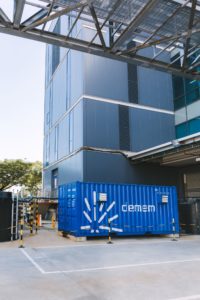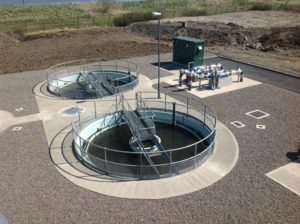Pump Forecasts for Many Thousands of Customers
It is now economically beneficial to forecast pump purchases at many thousands of plants. Since the average industrial pump is replaced every 10 years and since repairs and service generate costs equal to 75 percent of the initial price over the 10 year period, the market for replacement pumps and repairs/service is seven times higher than the market for new pumps for new systems.
Since most of the new systems are purchased by companies which already own pumps, the purchases by existing known companies represent 99 percent of the market.
The takeaway from these statistics is that 99 percent of the purchasers are already known and can be pursued based on detailed forecasts of their annual purchases. McIlvaine identifies each plant, the processes within that plant, the flow rates, and the annual purchases of new and replacement pumps as well as the potential for repairs and services.
The conventional way to pursue the market is through sales leads. However, there is a new approach. The Industrial Internet of Wisdom empowers IIoT and IIoT in turn enriches IIoW. The result is that an increasing percentage of pumps will be purchased based on a continuing lowest total cost of ownership evaluation. The sea change in the route to market will occur first for high performance pumps and for higher quantities. The recommendation is to set up parallel sales programs: one for high performance pumps and high volume sales, and one for general performance pumps and for small volumes of high performance pumps.
Both programs should take advantage of Advanced Forecasting. It is now possible to identify all the purchasers and predict 99 percent of the orders. The municipal wastewater industry can be used as an example.
BEWG owns a number of wastewater treatment plants, operates others and supplies waste treatment systems which include pumps. They are active in Singapore, Portugal and other countries. However, the bulk of their plants are in China. They will spend just under $20 million for pumps this year.
There are more than 90,000 municipal wastewater treatment plants worldwide including 16,000 in the U.S. There are 3500 wastewater treatment plants in the U.S. which spend more than $100,000 per year for pumps. Another 3500 spend more than $50,000 per year. The largest plants spend over $30 million per year each. California has a number of large wastewater treatment plants whose purchases range from $7 million per year to over $35 million.
There are 69,000 industrial plants in the U.S which are treating wastewater and then discharging it to lakes and streams. There are 400,000 plants treating wastewater worldwide. Some of these plants also treat municipal wastewater. ConAgra treats municipal wastewater in the small towns where it has food processing plants.
BASF has more than 100 plants worldwide. At the Ludwigshafen site it also treats industrial hazardous waste from nearby industries. It is a sizable purchaser of wastewater pumps at its U.S. plants.
Wastewater represents a small percentage of the total pump applications at BASF plants. Pump purchases for other processes can be determined based on the production and use of various fluids. For example acids are produced at some plants and then used in downstream processes. BASF Antwerp, Belgium is highly integrated with 50 individual production operations within the plant confines. BASF is a relatively small producer of chlorine. The Ludwigshafen plant produces 385,000 tons per year of chlorine. Dow, Germany produces 1.5 million tpy of chlorine. Its other chlorine operations were merged with Olin. This makes Olin the largest producer (5.6 million tpy). World production is now 70 million tpy.
Chlorine producers use 70 percent of the amount produced for chemical processes within the plant boundaries. The requirements for lined and exotic metal pumps can be determined from primary and secondary use of a specific acid at a specific plant. Wacker Chemie produces chlorine and then reuses each chlorine atom 15 times in downstream processes.
BASF has one professional interface for all global suppliers and has a suite of strategic procurement processes for all plants worldwide. This centralization of decision making is one of the factors in the sea change in the route to market.
Program for general performance pumps and for small volumes of high performance pumps
The conventional market program can continue to be used for this category of pumps. Advanced forecasting of purchases by individual customers can be used as an evaluation tool for the sales network and for the marketing program. In the past sales leads served this purpose. Since replacement pumps and repairs dominate the market the forecasts for individual plants and for individual sales territories are reliable and less expensive than sales leads.
Program for high performance pumps and high volume sales of general performance pumps
High performance pumps by definition are purchased because of their lower total cost of ownership rather than initial price. The process to obtain Lowest Total Cost of Ownership Validation (LTCOV) or to be a most preferred supplier, or even a accepted supplier is lengthy and needs to be pursued with a continuous effort. It is therefore critical to apply Advanced Forecasting and assess the opportunity with each customer and then formulate a program which may include direct sales to the largest customers and use of representatives for the smaller opportunities. In either case the knowledge of the likely opportunity at each plant is important.
Source: The McIlvaine Company







